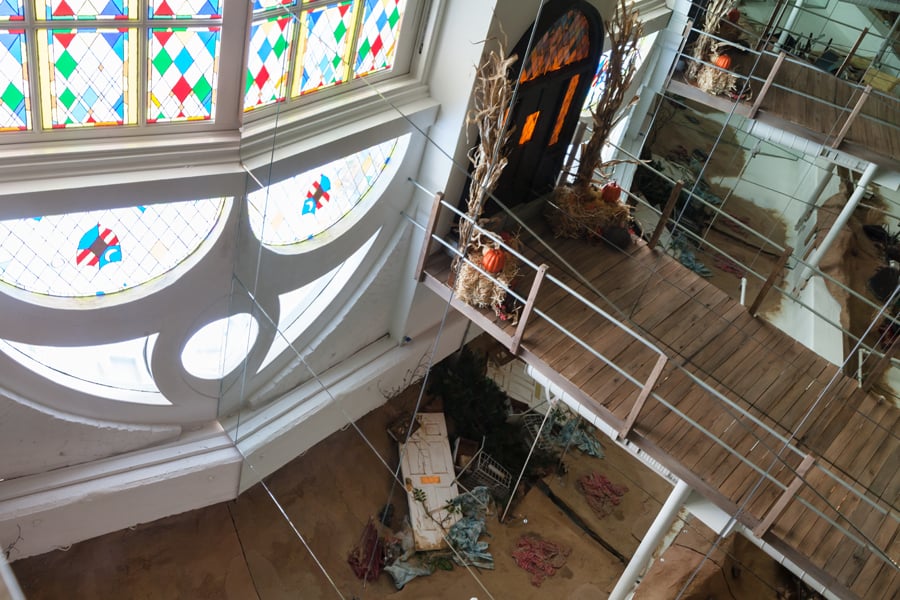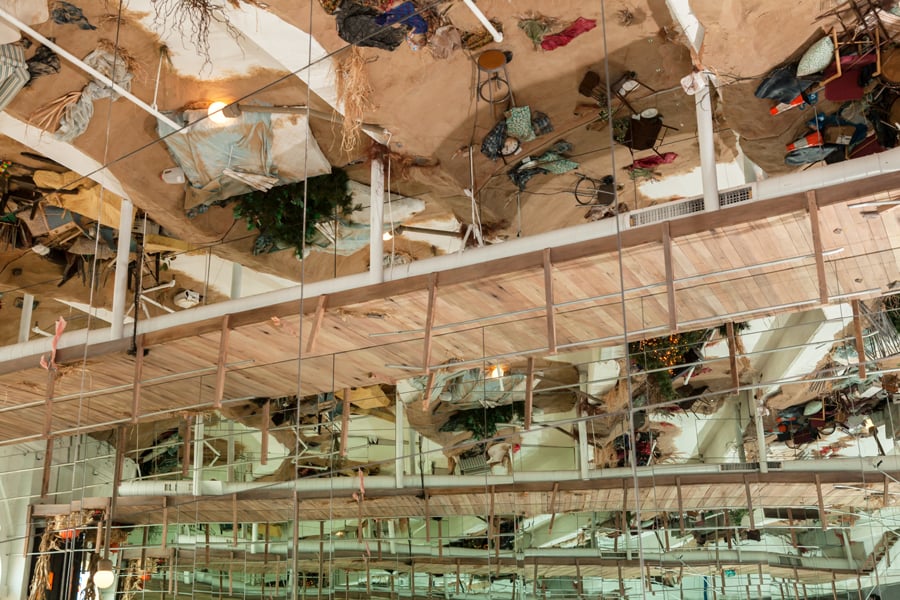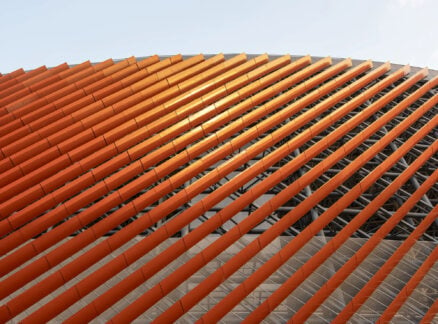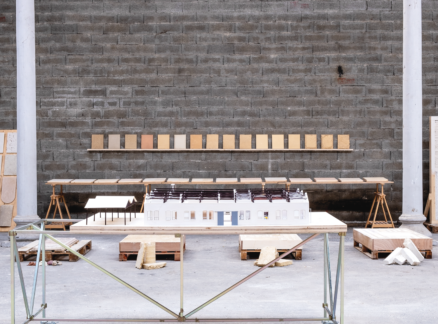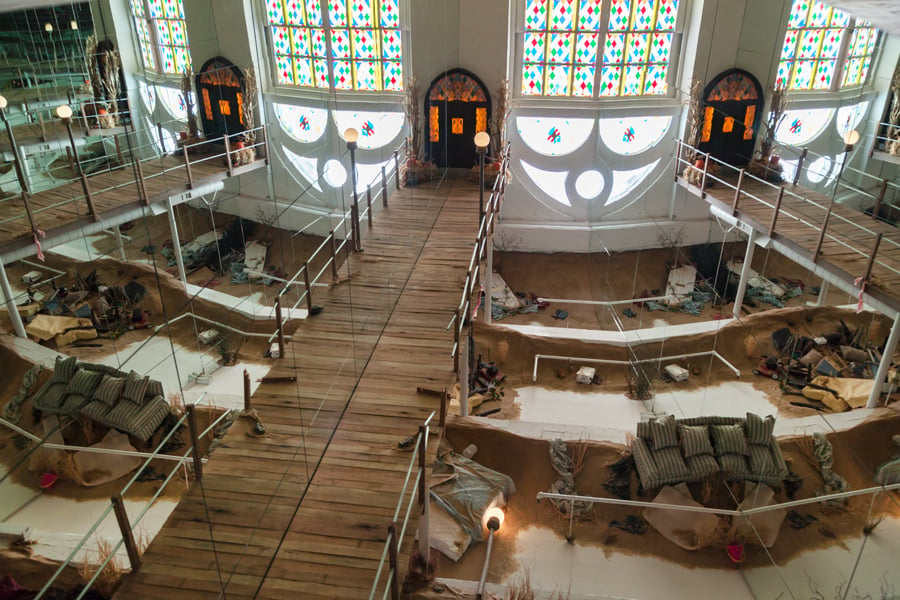
October 28, 2020
What Samara Golden’s Newest Installation Conveys about this Tumultuous Year
Presented at Philadelphia’s Fabric Workshop and Museum, the hyperrealistic tableau employs household items, sounds, and visual effects to assess the current state of affairs.

There’s no question that 2020 has been a challenging year. The prevailing COVID-19 pandemic brought seemingly-dormant systemic problems to the fore. Throughout the spring and summer, a rampant economic crisis was joined by civil unrest and extreme weather. While a whopping 34 major storms battered The United States’ eastern seaboard, a record-breaking wildfire outbreak crushed the west coast, all in the first few weeks of September.
“It felt like we were having to rethink everything every week,” renowned installation artist Samara Golden explained in a virtual press preview of her Upstairs at Steve’s installation at Philadelphia’s Fabric Workshop and Museum (FWM), on view until January 31, 2021. “It became clear that I needed to make this project about different voices, not just my own.”
Culminating her 2019–2020 residency at the multidisciplinary incubator and exhibition platform, this outdoor/indoor mise-en-scène says as much about the artist’s personal struggles as it does our collective malaise. Tying the piece together is a soundscape composed of recordings visitors have taken of their immediate surroundings.
In line with Golden’s particular brand of psychological architecture—perhaps best demonstrated in her seminal 2017 Whitney Biennial installation, The Meat Grinder’s Iron Clothes—this latest work combines realistic design elements with trompe-l’oeil effects.
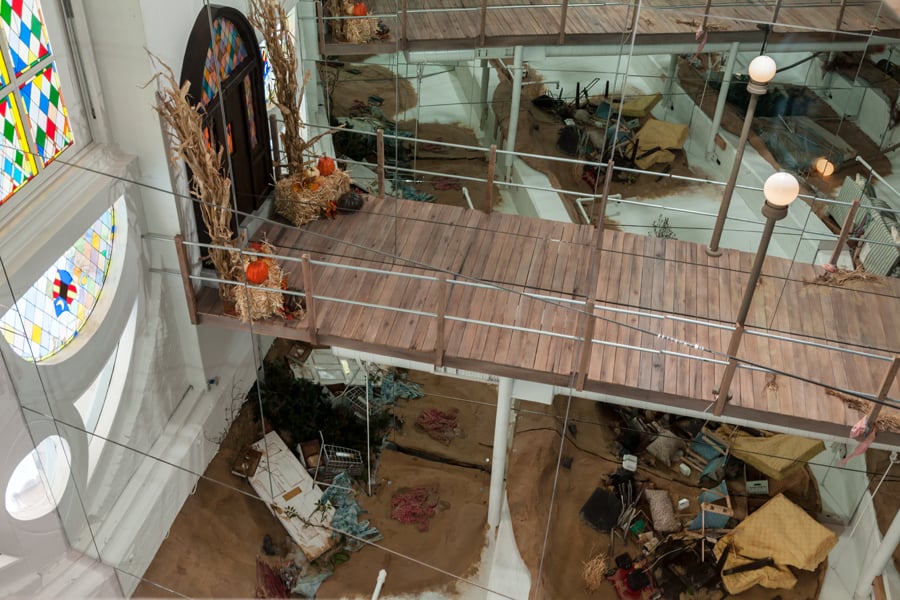
The freeze-framed beachscape, fastened to the ceiling of FWN’s double-height eight-floor gallery, incorporates mirrors to make the 600-square-foot interior staging seem endless. Discarded sofas, lamps, clothes, Christmas decorations, family heirlooms, and toys—all fabricated in the museum’s workshops—are strewn across simulated dunes as if displaced by a hurricane. Though the installation seems inert in its current state, there’s evidence of it once having contained life.
The building’s stained glass windows are used to evoke a lighthouse, which serves as a gravitational pull for these items and solidifies the artist’s play on the notions of indoor and outdoor space; nature, and artifice. These sculptural, architectural, and scenographic devices express a literal message of ecological collapse and communicate a number of hidden socio-political and personal metaphors.
“It’s a confluence of disasters as if people’s memories have been deposited in new, unfamiliar surroundings,” FWM curator Karen Patterson describes. “The installation is a mash-up of the real, the imagined, the known, the unknown, the exterior, and deeply interior. It’s an internal labyrinth of layered associations made even more complicated by its evocation of other issues, the absorption of a global pandemic, civic unrest, natural disasters, disconnection, wired connections, long walks alone, bubbles, pods, conflict, tension, messiness, and the contradictions we live with every day.”

The focus of the project, which completed during the museum’s 179-day shutdown and under the artist’s remote guidance, had to evolve over time. It was developed through intense conversations and a close collaboration Golden had with FWM’s staff, and was initially intended to reflect her grief at the passing of her brother-in-law who died due to complications with ALS (Lou Gehrig’s disease). The doorway featured within the installation was sourced directly from his New York apartment building, which suggests her brother in law’s ascension to heaven.
“For me, the piece operates on a lot of different levels; one is super personal and explores my relationship with Steve and the horror of his death, another level is this idea of catastrophe in the world that we all have to reckon with.” An internalized sense of impending doom seems to be the factor that resolves these disparate scales of reference. And yet, it’s the idea of meditation and introspection that this piece affords its visitors that makes it so optimistic.
A limited-edition blanket, released in November, will conjure the feeling of comfort while also evoking the idea of survivalism. Golden and FWN’s staff developed this exhibition souvenir of sorts through research conducted in the textile archives of the Philadelphia Museum of Art and the nearby Winterthur Museum in Delaware. The design juxtaposes recognizable elements from the past with allusions to her own life. Like the installation itself, it collapses time, history, and memory.
You may also enjoy “In Rotterdam, MVRDV Recasts the Archive as Museum”
Would you like to comment on this article? Send your thoughts to: [email protected]
Register here for Metropolis Webinars
Connect with experts and design leaders on the most important conversations of the day.
Recent Viewpoints
Viewpoints
Sustainability News Updates for Q2 2025




